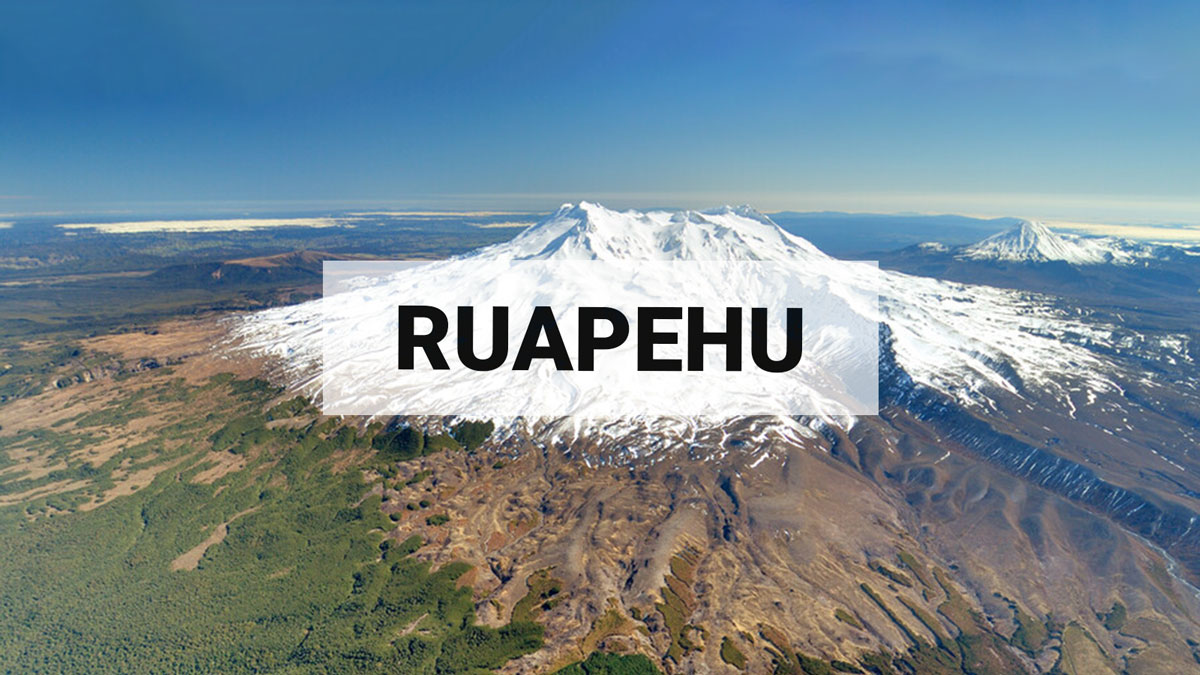
Mt Ruapehu strong volcanic tremor continues. Volcanic Alert Level remains at Level 2.
Elevated volcanic unrest continues at Mt Ruapehu, dominated by strong volcanic tremor. The Crater Lake (Te Wai ā-moe) temperature remains stable at 37°C. The Volcanic Alert Level remains at Level 2.
Elevated volcanic unrest has now been sustained at Mt Ruapehu for five weeks. This heightened volcanic unrest is primarily manifested as volcanic tremor, gas output and heat flow into the summit crater lake. The volcanic tremor level has varied during the last week but remains elevated overall. This tremor episode now represents the combined longest-strongest period of tremor recorded over the past 20 years.
The Crater Lake (Te Wai ā-moe) temperature has remained around 37 °C (range 36-38 °C) over the past three weeks. While the temperature has not increased, our modelling requires that a substantial amount of heat (about 200-300 MW) is still needed to sustain this high lake temperature. The laboratory analyses of a lake sample collected on 15 April show no changes in Crater Lake water chemistry since 31 March.
The static lake temperature and lack of chemical response indicate processes at shallow depth below the Crater Lake are not being reflected in the lake conditions. We did not observe an increase in magnesium concentration that would have pointed at some potential magma-water interaction below the surface. We will keep sampling the crater lake regularly to monitor any changes in the water chemistry.
The sustained nature of the volcanic unrest, coupled with the strong volcanic tremor signals, elevated gas output and hot lake remain indicative of processes being driven by molten rock (magma) interacting with the geothermal system within the volcano at shallow depth (0.5-2 km).
The most likely outcome of this unrest episode within the next four weeks is still that no eruptive activity occurs, as no eruptions have followed unrest in the past 15 years. If eruptive activity does follow this unrest, it is expected to be initially small-scale. Such an eruption would impact mostly the summit area, with also lahars further downstream - like the September 2007 eruption or the slightly larger April 1975 or June 1969 events. Only if eruptions continued would we expect to see larger, ash eruptions developing with substantial impact further afield outside the Tongariro National Park.
The chances of a prolonged eruptive episode or a larger eruption, such as occurred in 1995-96 with wider ashfall impacts, is higher than it was two months ago, but remains very unlikely. Such an eruption would most likely only follow a sequence of smaller eruptions.
The interpretation of this activity is consistent with elevated volcanic unrest at the heightened level and therefore the Volcanic Alert Level remains at Level 2. The Aviation Colour Code remains at Yellow.
Mt Ruapehu is an active volcano and has the potential to erupt with little or no warning when in a state of elevated volcanic unrest.
The Volcanic Alert Level reflects the current level of elevated volcanic unrest. The Volcanic Alert Level should not be used to forecast future activity. However, at Volcanic Alert Level 2, eruptions are usually more likely than at Volcanic Alert Level 1.
Volcanic Alert Level 2 indicates the primary hazards are those expected during volcanic unrest; steam discharge, volcanic gas, earthquakes, landslides and hydrothermal activity. While Volcano Alert Level 2 is mostly associated with volcanic unrest hazards, eruptions can still occur with little or no warning.
For information on access to the Mt Ruapehu area, please visit the Department of Conservation’s websites on volcanic risk in Tongariro National Park and follow the DOC Tongariro Facebook page for further updates.
For information about responding to volcanic activity there are guidelines from the National Emergency Management Agency's Get Ready website.
GNS Science and its National Geohazards Monitoring Centre continue to closely monitor Mt Ruapehu for further changes.
Steven Sherburn Duty Volcanologist
Media Contact: 021 574 541 or media@gns.cri.nz